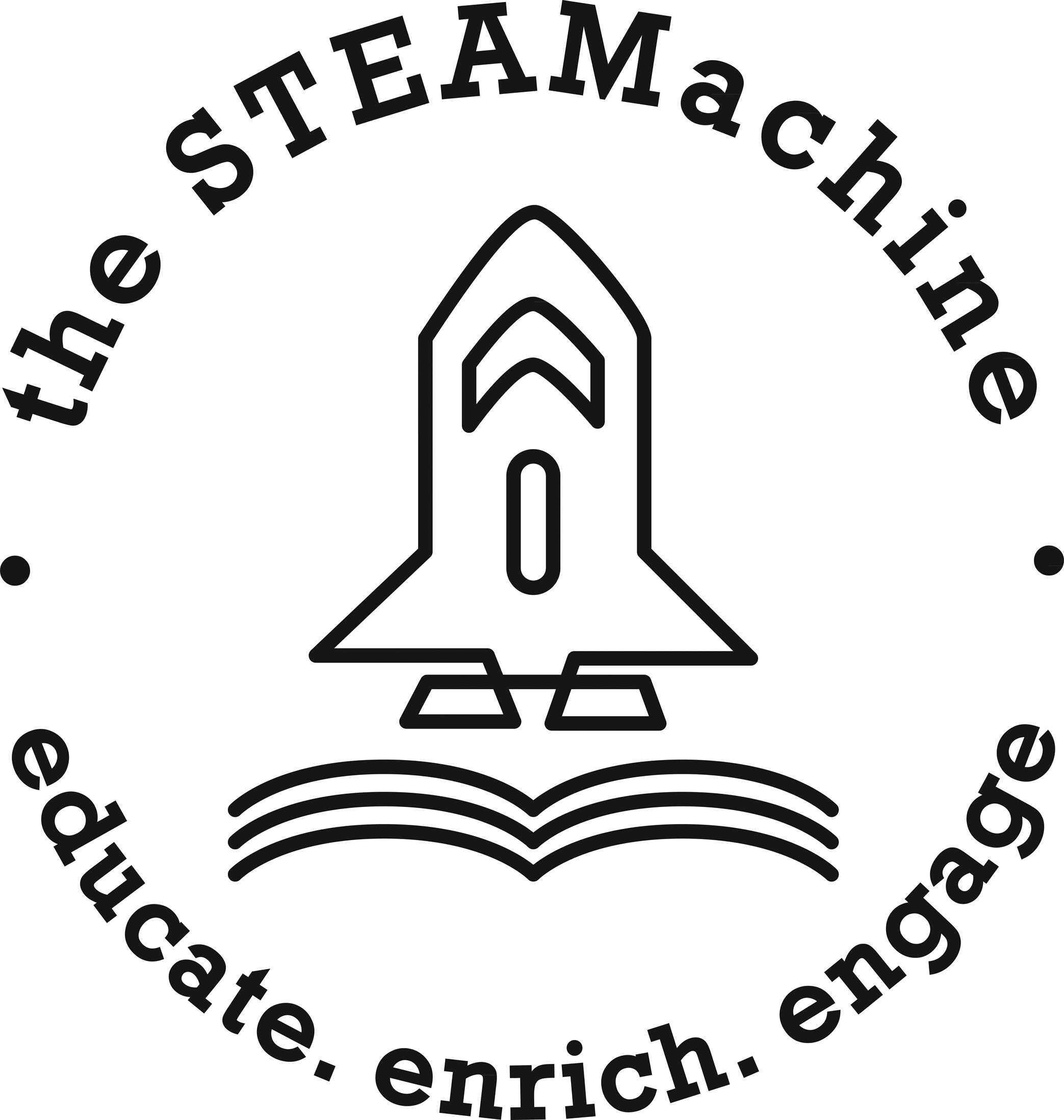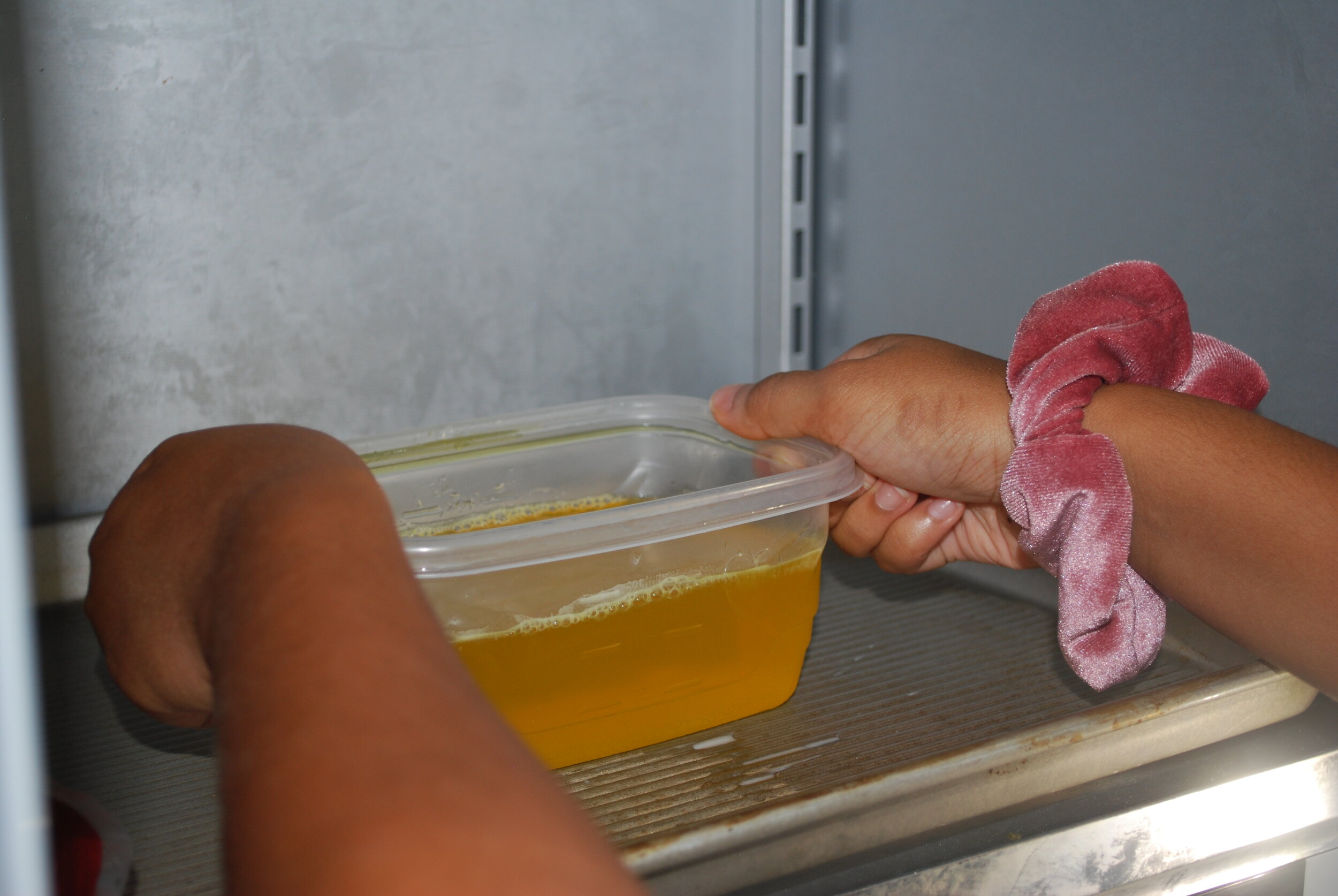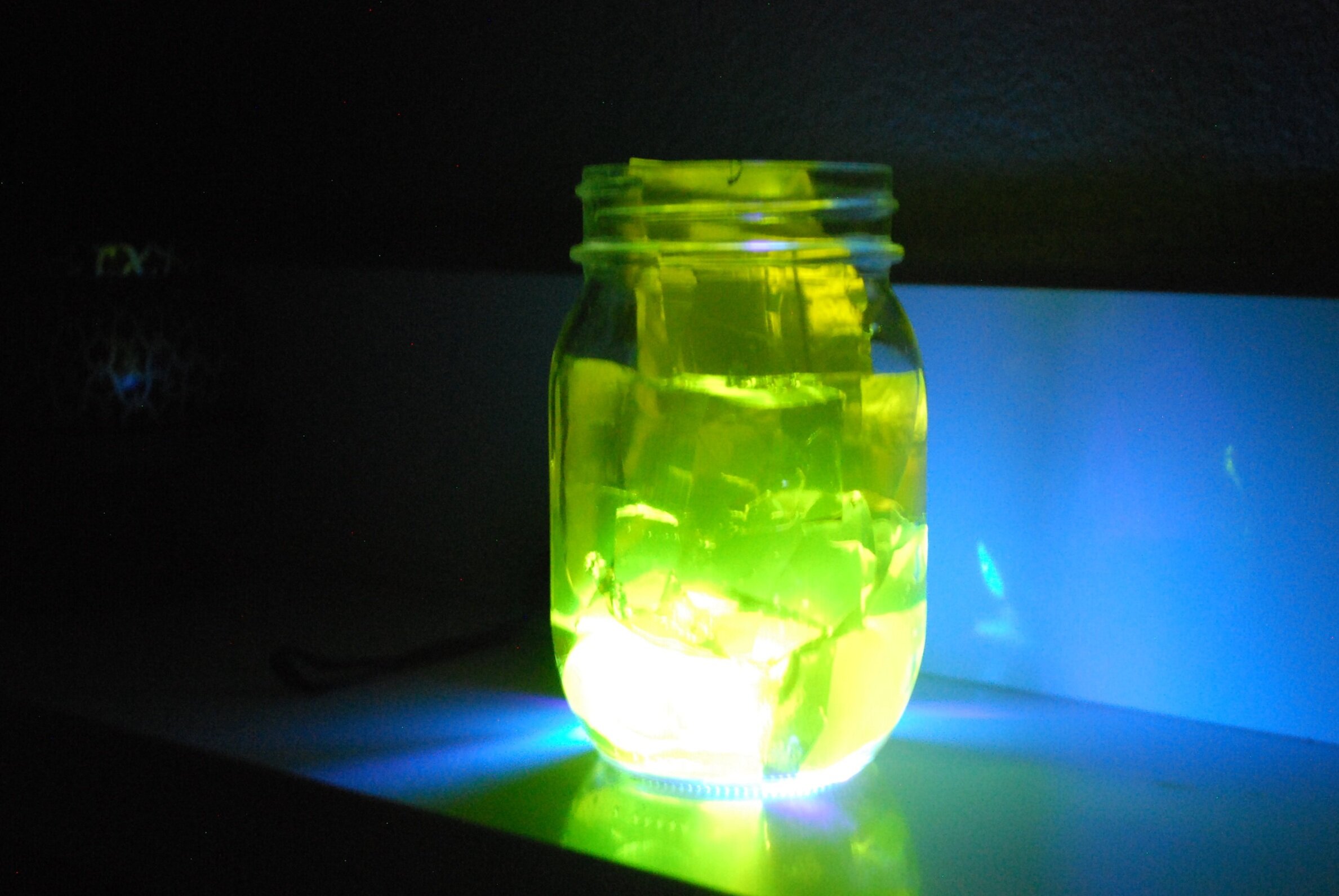Glow in the Dark Jello
How cool would it be to eat jello that glows in the dark? Try this ultra fun experiment that will surely catch your eye and teach you about the properties of ultraviolet light and how (special) jello glows in the dark!
Standards in this lesson: NGSS-1-PS4-2, NGSS-K-3-ESS3-3, NGSS-4-PS4-2, NGSS-5-PS1-2, CCSS.MATH.MC.2
Materials
Jello (light-colored jello such as yellow or green works best!)
16 ounces or 2 cups of tonic water
Stove (grown-up supervision may be necessary.)
Liquid measuring cup
Small pot for boiling water
Mixing spoon
Mixing bowl
Refrigerator
Small table lamp with fluorescent black light (The lightbulb must be fluorescent and not just a colored bulb.)
Procedure
Gather your supplies!
Step 1
Measure out the amount of tonic water (16 oz/2cups) that is needed into the liquid measuring cup.
SAFETY! Careful with the tonic water because if the bottle has been shaken, the water may explode out like soda!
Step 2
Pour the tonic water carefully into the small pot. Turn the stove on high and allow the water to boil. (Be sure to get a grown up’s help with this.) While the water is boiling, pour the jello powder into the mixing bowl.
Step 3
Once the tonic water has boiled, carefully pour the tonic water into the mixing bowl with the jello powder.
SAFETY! Careful, it’s hot! Make sure to ask a grown-up to help you!
Step 4
Stir the jello and tonic water together, until the jello powder is fully dissolved into the tonic water. Add one cup of cold tap water to the mixing bowl.
Step 5
Place the mixing bowl into the refrigerator and allow to chill for at least four hours. After the jello has chilled for four hours, take it out of the refrigerator.
Step 6
To make the glowing effect easier to see, cut the jello up into smaller pieces!
SAFETY! Ask a grown-up for help!
Turn off all the lights and turn on the lamp with the blacklight in it! You should have glowing jello!
Science Explanation
Kindergarten - 2nd Grade . . .
- What did you see when you put the black light on the jello? What color was the jello under the light?
- You might be wondering, what makes the jello glow in the dark and how can we see it? The tonic water we added to the jello powder causes the jello to glow. Certain objects, in this case the jello, can absorb UV light. Once absorbed, some light is reflected at a wavelength we can see, making the object glow. That wavelength is on the blue/purple end of the electromagnetic scale which is why when you look at a black light it kind of has a purple tint.
- Objects in darkness can only be seen when they are lit up by a light. Normal objects can be seen with a normal bright light lightbulb while glowing objects need a black light to see the fluorescent shine on them. NGSS-1-PS4-2
- Why do you think we need to use hot water rather than cold water? (Answer: The jello powder is similar to sugar and sugar dissolves in hot water faster than colder water because hot water has more energy.) NGSS-K-3-ESS3-3
- Did you notice the color of the water? What did it look like before you added the jello powder? What did it look like after you added the Jello powder?
3rd Grade - 5th Grade . . .
- Did you notice any difference in the color of the jello from...? What does the jello feel like before and after it cools in the refrigerator? When the jello powder dissolved into the hot water and then was cooled, it turned from a liquid to a solid. It also created something edible!
- How does a black light cause things to glow such as the jello? NGSS-4-PS4-2
- The electromagnetic spectrum is a scale that lines up all of the electromagnetic waves based on what their wavelengths are. Black lights shine UV light. UV light is near what we see as blue/purple, but is slightly shorter. The shorter wavelength makes UV light have higher energy.
- The tonic water that was used to make the jello contains a super cool chemical called quinine, which takes in (absorbs) the UV light and reflects it as blue-white visible light. Therefore, you can see the glow very vibrantly on the jello. NGSS-5-PS1-2
- Did a chemical reaction change the weight of the jello? (Yes, the jello mixture was a bit heavy because it was in it’s liquid state.)
- The total mass of matter is kept the same even if the matter is heated, cooled, or mixed with other materials.
Math Extensions
Kindergarten-2nd . . .
- CCSS.MATH.MC.2
- Do you notice your liquid measuring cup? It has numbers on it! By using the cup, you can measure the amount of water you need by using the correct units!
- What units do you notice are on your cup? Milliliters? gramsIf your measuring cup is a cylinder, use cm to measure the height and approximate radius. Can you calculate the volume of tonic water you added in cubic cm?
Written by Aminah Rangwala Inspired by: Instructables Cooking









